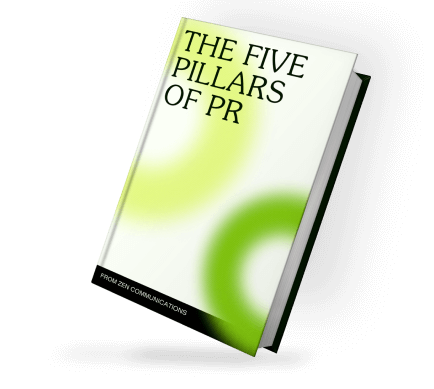Free e-book download click to download the first two chapters of ‘The Five Pillars of PR’
What if we told you that juice is a regular topic of conversation among the Zen team when it comes to our clients and their communications strategies?
Bear with us a second, we promise we haven’t gone bananas…
We’re talking about the concept of ‘juicing’ content to ensure everything we write is used as effectively and widely as possible – maximising not only its impact but also how much it can benefit the client.
If we look at a specific example: we might write a feature for an industry magazine on a topic of importance and relevance to that sector. We’ll spend time talking to our contact at that magazine to ensure the piece fits their editorial agenda and is going to be of interest to their readers. Once we’ve got the go ahead, we’ll then thoroughly research the topic, glean key insights from our client, and of course then craft the piece to meet the specific requirements of the title.
A while later, we’ll see the article appear in print and normally on the magazine’s website too. We could consider that a finished task and congratulate ourselves on a job well done.
But to do so would be an oversight – because there are likely to be many ways in which we could ‘juice’ this content to ensure it gets seen by as many of the client’s target audience as possible.
So, the practice has many advantages if done effectively. But there are as many different ways to juice a piece of content as there are flavours of juice in your local supermarket. How exactly we maximise use of a particular piece of writing will depend on the client, their preferred methods of communication, and the specific aims of the content. We’ll sit down with them and make a plan according to all of those factors, but ideas we might throw into the mix would include:
A blog on their website – this can be particularly effective where there are additional ideas we want to raise, or further information we want to share, which goes beyond the scope (or word limit) of the original content.
Other articles – it may be that we’ve written the piece for a particular industry magazine, but in fact it’s just as relevant to a separate industry, in which case we may approach a different title within that second (non-competitive) sector and pitch a similar feature to them.
Email content – this can be shared with everyone on the company’s mailing list, or could be targeted to one or two specific contacts. We may introduce the theme of the article and then share a copy of it so they can read through it and share their thoughts with the client.
Social media posts – we all know how far reaching a well-composed social media post can be, so slicing a feature down into easy-to-read segments which can be shared via the company’s online pages is something we’ll quite often suggest. This is also helpful for people who prefer to digest smaller pieces of information rather than read an entire article on one subject, ensuring we cater to all communication preferences.
A guide – if the content introduces an idea, it may be that the client has further information they can share. For example: to help their customers implement that idea or practice into their own business. This is where a printed or downloadable guide can be a great way to showcase additional knowledge and specific advice.
Video – creating spoken and/or visual content based on the article’s theme is another great way to increase its reach, this time attracting the attention of audiences scrolling the client’s website or social media. Again, this is a great option to reach people who want their information presented in a short, dynamic format.
There are many other options we could list, but hopefully by now you’ll see exactly why juicing is such an ap-peal-ling part of any client’s PR strategy (with the added bonus that talking about it allows us to use awful puns!).
We’d love to hear from you if you have any questions about juicing your communications content, so do get in touch…


Free Download